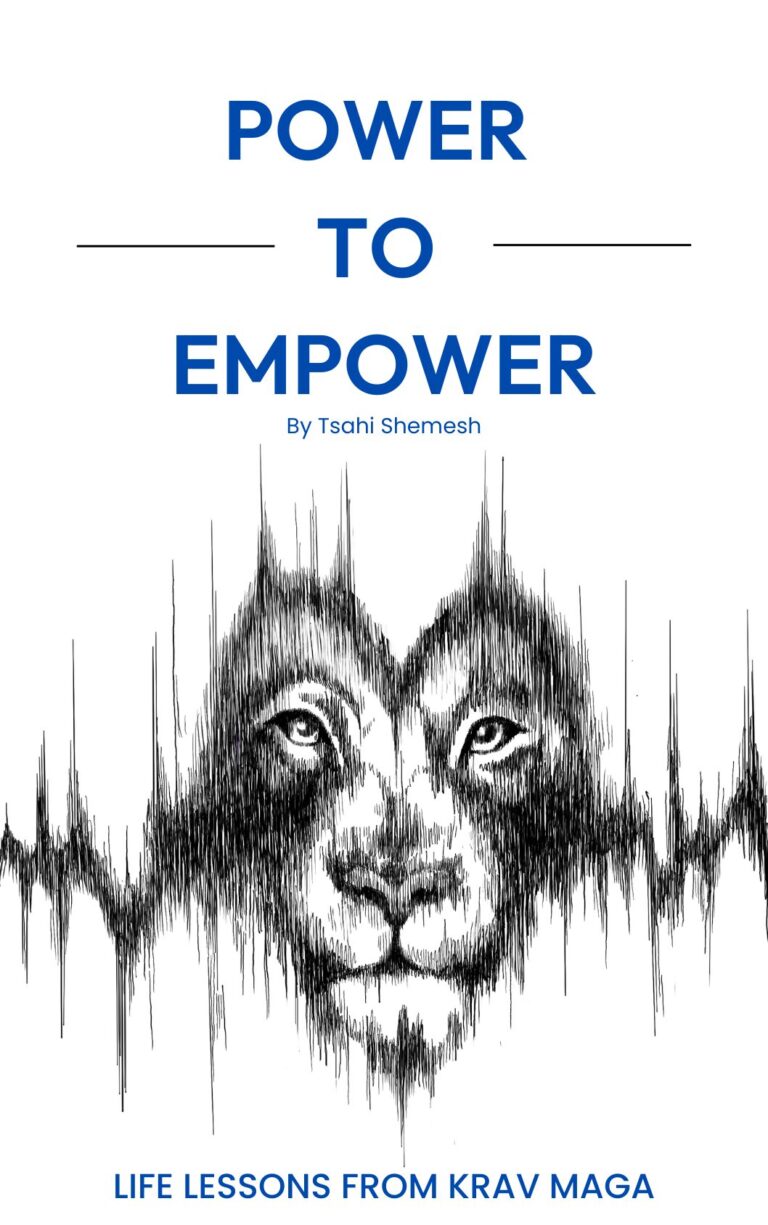Are Humans Inherently Good or Evil?
In 1974, the performance artist Marina Abramović staged one of the most disturbing social experiments ever attempted. The piece was called Rhythm 0. For six hours she stood still in a gallery in Naples while members of the audience were invited to do whatever they pleased to her. A table beside her displayed 72 objects. Some were harmless: a rose, a feather, grapes, a piece of bread. Others were weapons: a razor blade, scissors, a whip, and even a loaded gun. Abramović herself would remain passive. The only rule was that the crowd could act freely without consequence.
At the beginning, the atmosphere was gentle. People placed flowers in her hands, kissed her cheek, and hugged her. But as the hours passed, the boundaries of civility eroded. Someone cut off her clothes. Another wrote on her body with a marker. A man sliced her neck with a blade and drank her blood. The most chilling moment came when a participant lifted the loaded pistol, placed it in Abramović’s hand, and pressed the barrel against her head. Only the intervention of another spectator prevented what could have been a public execution.
When the six hours ended, Abramović began to move again. The audience, who had treated her body as an object, could no longer look her in the eyes.
The performance revealed something terrifying about human nature. Stripped of accountability and order, many people will choose cruelty.
Experiments That Exposed the Dark Side of Human Nature
Abramović’s piece was not the only time researchers confronted the question of whether humans are inherently good or evil. Psychology has returned to this theme again and again.
The Stanford Prison Experiment (1971)
Psychologist Philip Zimbardo transformed the basement of Stanford University into a mock prison. College students were randomly assigned roles as guards or prisoners. Within days the “guards” became abusive. They forced prisoners to strip naked, humiliated them, and devised cruel punishments. The “prisoners” fell into despair, submission, or rebellion. The experiment, scheduled for two weeks, had to be stopped after six days due to the psychological breakdown of participants.
The lesson was stark: place ordinary people in a structure that rewards domination and removes accountability, and many will descend into brutality.
The BBC Prison Study (2002)
More recently, psychologists Alex Haslam and Steve Reicher recreated a similar experiment in the UK, but with closer oversight. The participants again divided into guards and prisoners. What they saw was not blind obedience, but the rapid formation of group identities. Guards aligned against prisoners, prisoners resisted, and conflict escalated until the study had to be stopped.
The conclusion was not that humans simply obey authority, but that humans bond quickly into groups and are willing to harm outsiders to protect their new identity. This makes cruelty not a rare flaw, but a predictable outcome of group dynamics.
Childhood, Cruelty, and What We Learn
If you want to see human nature without filters, watch children. Kids say what they think with no concern for politeness. That honesty is sometimes refreshing, but it can also be cruel. They point out flaws without hesitation, they mock differences, they exclude and bully. They do not yet know that certain thoughts should be checked before they are spoken, but the fact that those thoughts appear so easily tells us something about the human condition.
Children are capable of great kindness too. A child can share a snack, hug a crying friend, or speak with clarity about what feels fair and unfair. But the playground proves another truth: kids can be vicious. They humiliate, they gang up, they torment. It takes years of guidance, discipline, and repetition for them to understand what is right and what is wrong.
What does this say about human nature? It means kindness is not automatic. It must be cultivated. Left alone, many children will lean toward dominance, mockery, and aggression because those impulses serve them in the moment. Learning empathy, compassion, and restraint requires effort.
Literature captured this in William Golding’s Lord of the Flies. A group of boys, cut off from adults and rules, slide into violence and fear. Their world turns savage because the thin layers of civilization are stripped away. Golding’s point is not far from reality. Without boundaries and accountability, the darker side of us quickly surfaces.
It is not that I do not believe in good nature. I do. I have seen people act with extraordinary courage and generosity. But I am fully aware of the full nature of things, and I refuse to sugarcoat it. Human beings are both amazing and brutal.
What Happens Without Law and Order?
This brings us to a pressing question today. What happens when law itself is weakened? In recent years we have heard growing voices calling for reduced police budgets or even abolishing law enforcement altogether. The idea appeals to an optimistic view of human nature: if left alone, people will respect one another. If freed from authority, communities will regulate themselves with fairness.
But history and psychology suggest otherwise. When the guardrails of accountability disappear, the results are rarely compassion. They are chaos.
Imagine a society where people obey the law only when it is convenient. A driver decides traffic lights are optional. A gang decides a neighborhood belongs to them. A man concludes that theft is acceptable because no one is watching. What recourse is left to the ordinary person when the law no longer protects him, and no police force exists to enforce boundaries?
The answer is grim. Power fills the vacuum. Those who are willing to use force without conscience become the winners. The weak and law-abiding become prey. The greatest beneficiaries of disorder are not the kind or the just, but the ruthless.
This is why even flawed systems of law and enforcement are essential. They act as a dam holding back the flood of human impulses. Remove them, and we are back in Abramović’s gallery, watching the crowd descend into cruelty simply because nothing stops them.
Why Do We Still Believe in Human Goodness?
If the evidence of cruelty is so strong, why do we continue to believe in human kindness?
The answer is both psychological and practical. On a personal level, most people have experienced moments of generosity, sacrifice, and empathy. A stranger offers directions. A friend lends money in a crisis. A neighbor helps carry groceries. These acts of decency remind us that goodness is real.
On a societal level, trust is the glue that holds communities together. If we viewed every person as a potential predator, civilization would collapse into paranoia. To live together, we must extend a baseline of trust, even knowing it can be betrayed. Hope in human goodness is not just an ideal. It is a necessity.
But belief in goodness does not erase the evidence of darkness. The truth is that human beings are a mix of both. The circumstances and structures around us often determine which side emerges.
The Balance of Trust and Strength
The solution is not to abandon trust, nor to surrender to fear. It is to balance faith in humanity with the readiness to protect ourselves when that faith is tested.
Communities need police, courts, and systems of accountability to restrain the worst impulses of human nature. And individuals need personal strength to ensure they are not helpless when law and order fail them.
This is where the philosophy of martial practice becomes relevant. The point is not to prepare for violence because we love fighting. It is to prepare so that we are not at the mercy of those who do. The warrior is not eager for battle. The warrior values peace so deeply that he trains for the moment when peace is threatened.
A Practical Lesson of Philosophy:
What does this mean for everyday life?
- Do not confuse kindness with weakness. Be compassionate, but do not allow others to exploit your decency.
- Support systems of law and order, even when they are imperfect, because the alternative is worse.
- Train your body and mind to be strong. Physical ability breeds confidence, and confidence reduces fear.
- Understand that people respect strength. Not brute aggression, but composed strength that signals control.
- Strive to be a person who protects, not preys. The world needs warriors who stand for values, not fighters who seek conflict.
Human beings are not only one thing. We are capable of breathtaking compassion and staggering cruelty. History, psychology, and even childhood all show both sides. Some people will risk their lives for strangers. Others will harm without hesitation if they believe they can get away with it.
We cannot choose which impulses humanity was born with, but we can choose which ones we strengthen. The chances of having more positive interactions rise when we become better people ourselves, when we learn discipline, when we practice kindness, and when we prepare to confront evil instead of pretending it does not exist.
Victimhood is not a virtue. Without the ability to protect yourself, kindness is not a virtue at all. It is confusing. It is an invitation to be used by those who respect nothing but power.
That is why strength matters. Not aggression for its own sake, but the kind of strength that makes cruelty think twice before approaching.
People respect power. Be powerful. And use it to defend the values that allow goodness to survive.
Do something amazing,
Tsahi Shemesh
Founder & CEO
Krav Maga Experts
Related Articles
1. Fighter vs. Warrior: Why the Difference Matters More Than You Think
Because once you accept human nature has both good and bad, the next question is: what role do you choose for yourself? A fighter seeks victory. A warrior seeks clarity. This connects directly to the closing message of power and values.
2. Why Are We So Drawn to Violence?
To understand why cruelty fascinates us, you must face the uncomfortable pull we all feel.
3. Human Violence – Nature vs. Nurture
A reflection on childhood cruelty, the thin layer of civilization, and how rules and discipline protect us from savagery.


One Response
This is among one of the best posts you have. Although I’ll have to say more maybe in a more interactive setting like in person I agree with everything I must say that we are civilized because of laws. Without it we are just mere animals. Strip that layer and we left with primitive impulses where we can resort to the our basic impulses with impunity . The irony of the current world though is how we managed to regress albeit the advent of technology and more laws being passed. We are mere animals dressed in better clothes with sophisticated weapons. In light of the current atmosphere I’ve witnessed former friends who are educated in the best colleges applaud atrocities against fellow human beings under the guise of flawed and self righteous morality. Recently as we have seen there are folks who have gleefully celebrated the murder of a beloved political figure because he expressed his own stance that was not popular with the rival party. Sometimes when I see things like this I want to crawl inside a cave and be away from all these monstrosity however I have creature comforts I’ve been accustomed to and abandoning that would be too hard to bear hence why I have to live alongside monsters dressed in fancy clothes. Also that’s why I train to protect myself. Thank you for the very insightful poi thought provoking piece. I must say these kind of sentiments must come from somewhere real.